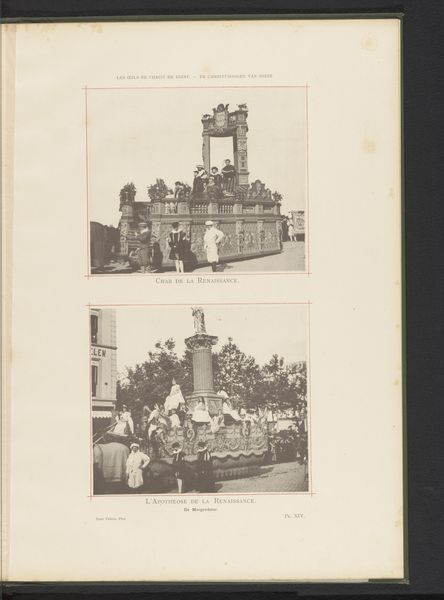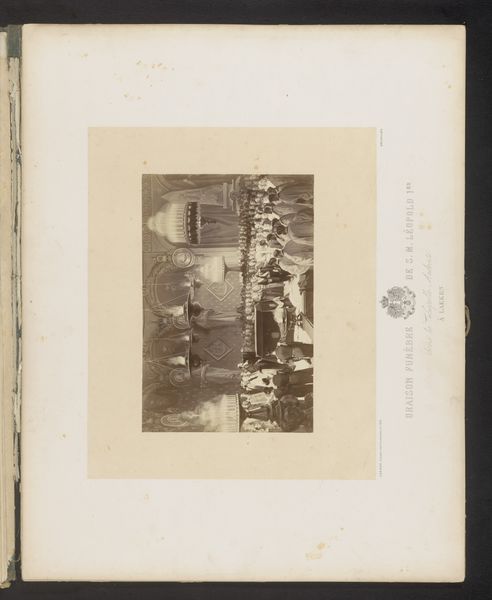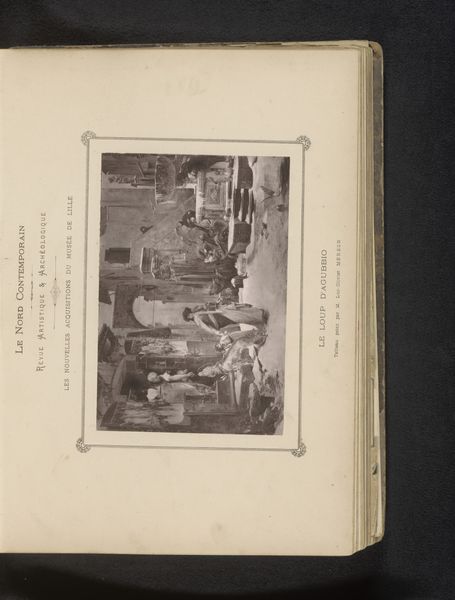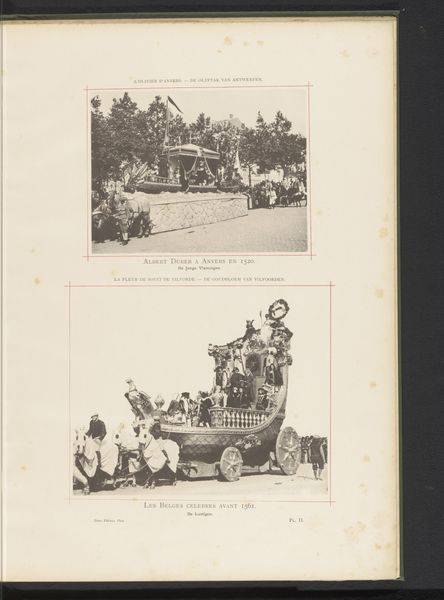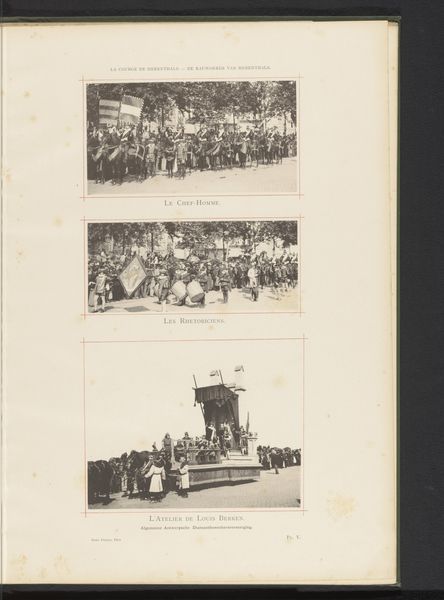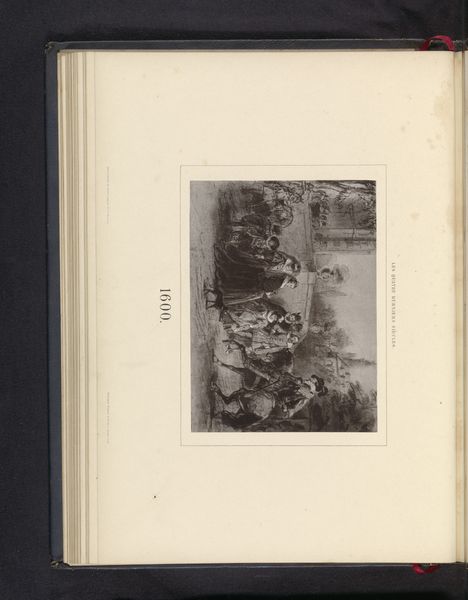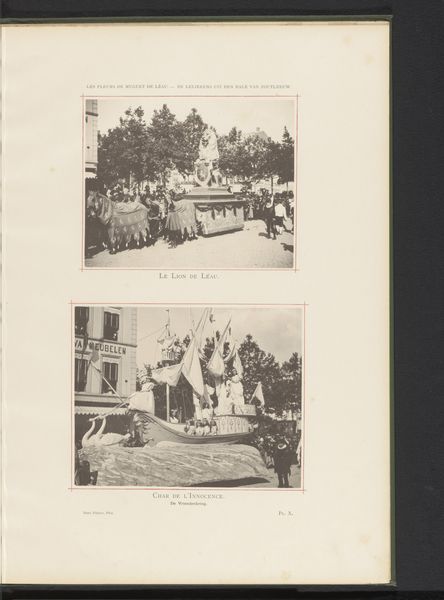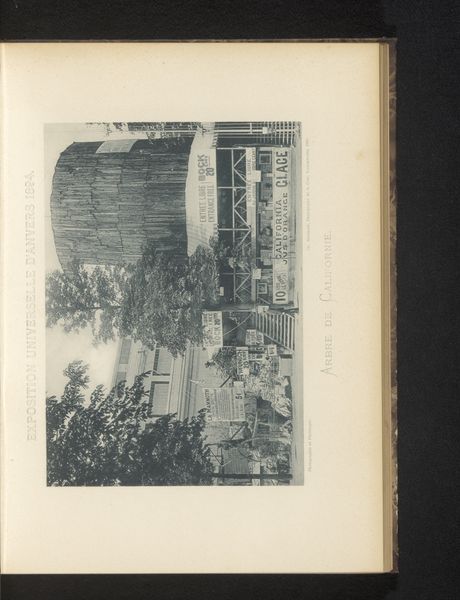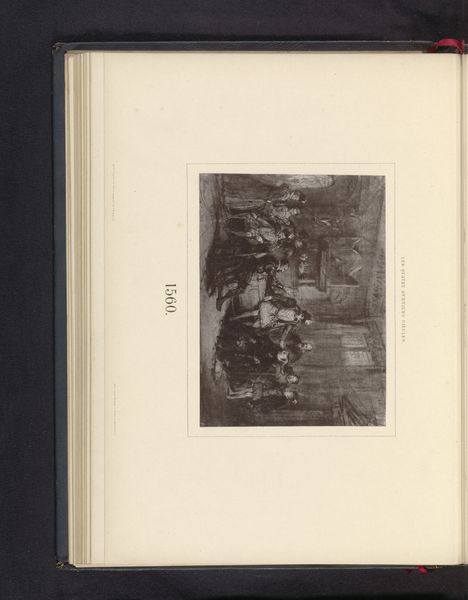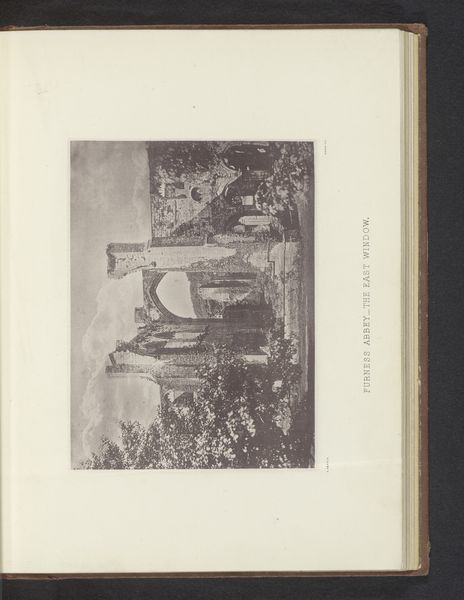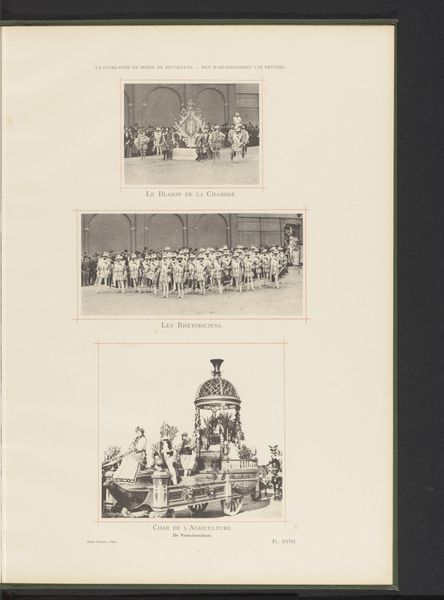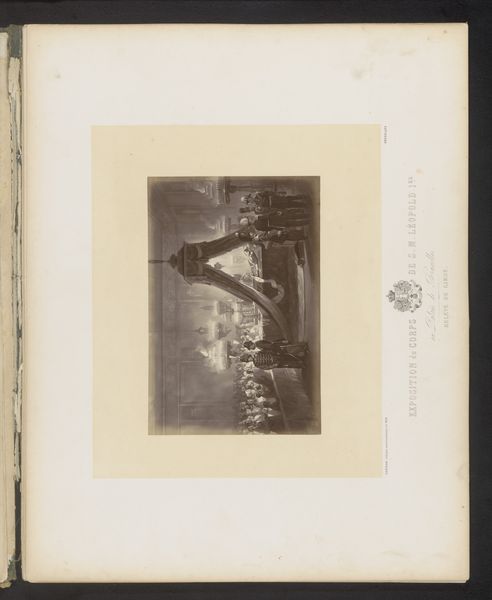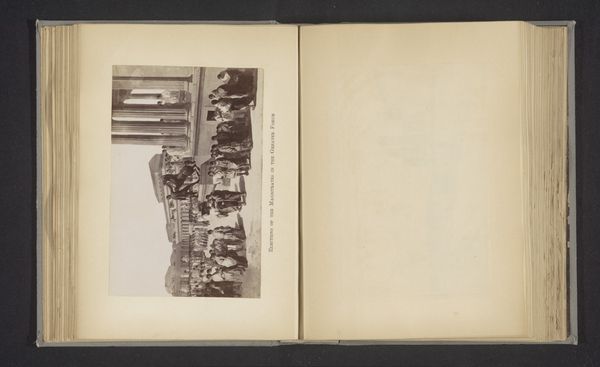
Drie gezichten op de optocht van Landjuweel ter ere van het vijftigjarig bestaan van de Academie d'Archéologie de Belgique in 1892 in Antwerpen 1892
0:00
0:00
print, photography
#
pictorialism
# print
#
landscape
#
photography
#
cityscape
Dimensions: height 495 mm, width 352 mm
Copyright: Rijks Museum: Open Domain
Editor: This is a photograph, or rather three photographs on one print, titled "Drie gezichten op de optocht van Landjuweel ter ere van het vijftigjarig bestaan van de Academie d'Archéologie de Belgique in 1892 in Antwerpen," taken in 1892 by the Frères Dero. It captures what appears to be a historical parade. What really strikes me is how the photographers managed to freeze these moments of procession with such clarity and detail, despite the challenges of early photography. It feels like a tangible glimpse into the past. What stands out to you most about this image? Curator: Ah, the Frères Dero! Their work always whispers stories, doesn't it? What strikes me is not just the clarity, but the way they’ve chosen these specific tableaux. The top one, with its costumed figures and elaborate cart, suggests a kind of allegorical presentation of knowledge – “Les Sciences,” as the caption indicates. The Gothic ruin... what could that signify, I wonder? A fall, a decline? Perhaps a romanticized vision of the past being overtaken. Do you feel that too? Editor: I do see that now, like a nostalgia for what was, being carried by the new. Maybe that's why the parade feels a bit melancholic? But I hadn't noticed that interpretation on my own. Curator: Photography in that era was such a wonderful dance between art and document. They're not just recording, they're curating a message, imbuing the scenes with symbolism that reflects the anxieties and aspirations of their time. Look how carefully they framed each shot; do you think they wanted viewers to make connections across these different scenes? Editor: It definitely feels that way. Each scene feels staged, and that’s reinforced by how crisp each photograph is! Thank you so much, I wouldn't have looked beyond the immediate spectacle. Curator: Precisely! That’s the magic of these images, isn't it? They pull us in with their immediate beauty, then gently urge us to contemplate the deeper currents swirling beneath. They let the spectacle itself prompt you into learning the language of those days, and I find it fascinating that the language of art, both literally and figuratively, has persisted over time.
Comments
No comments
Be the first to comment and join the conversation on the ultimate creative platform.
